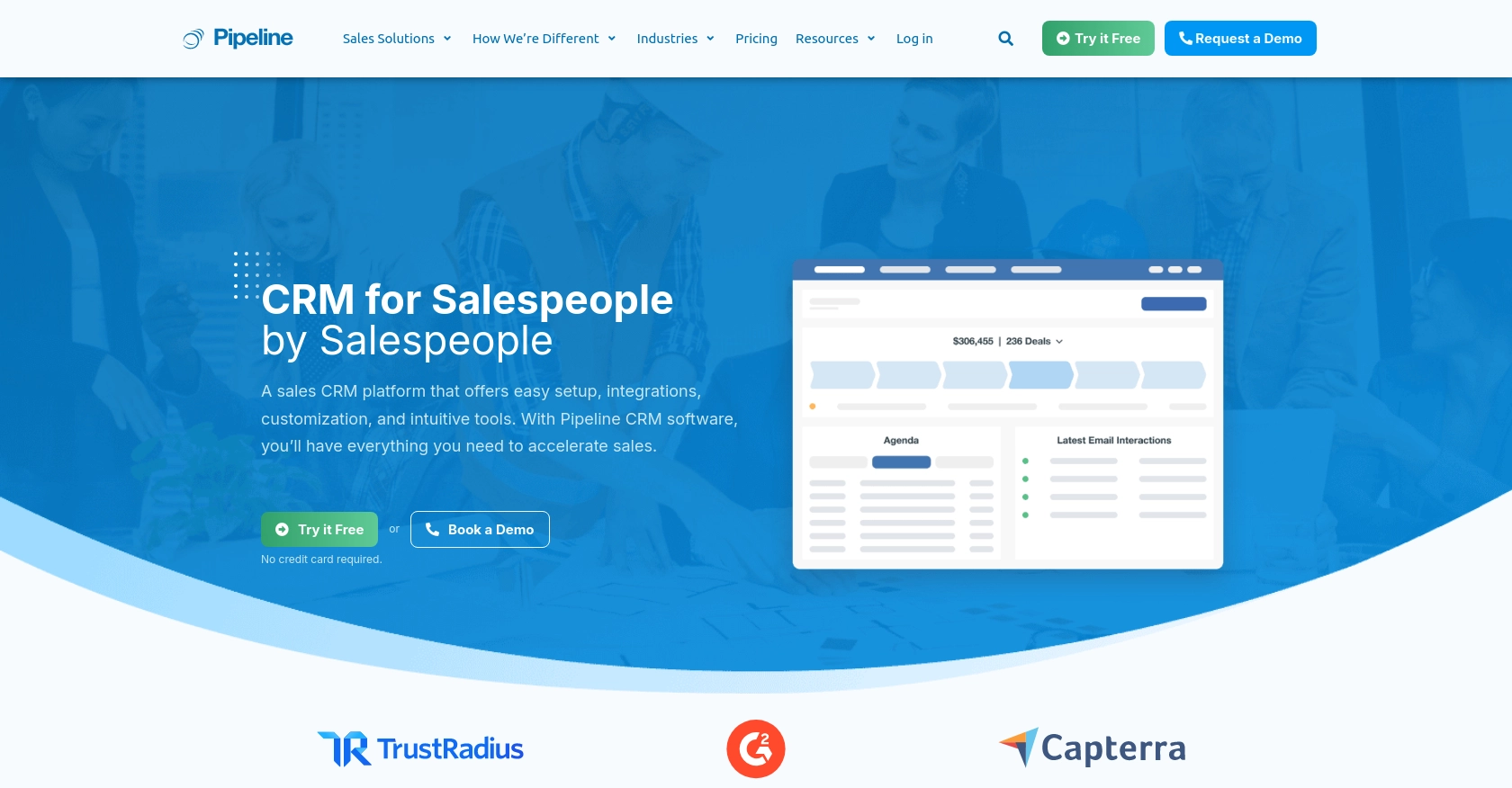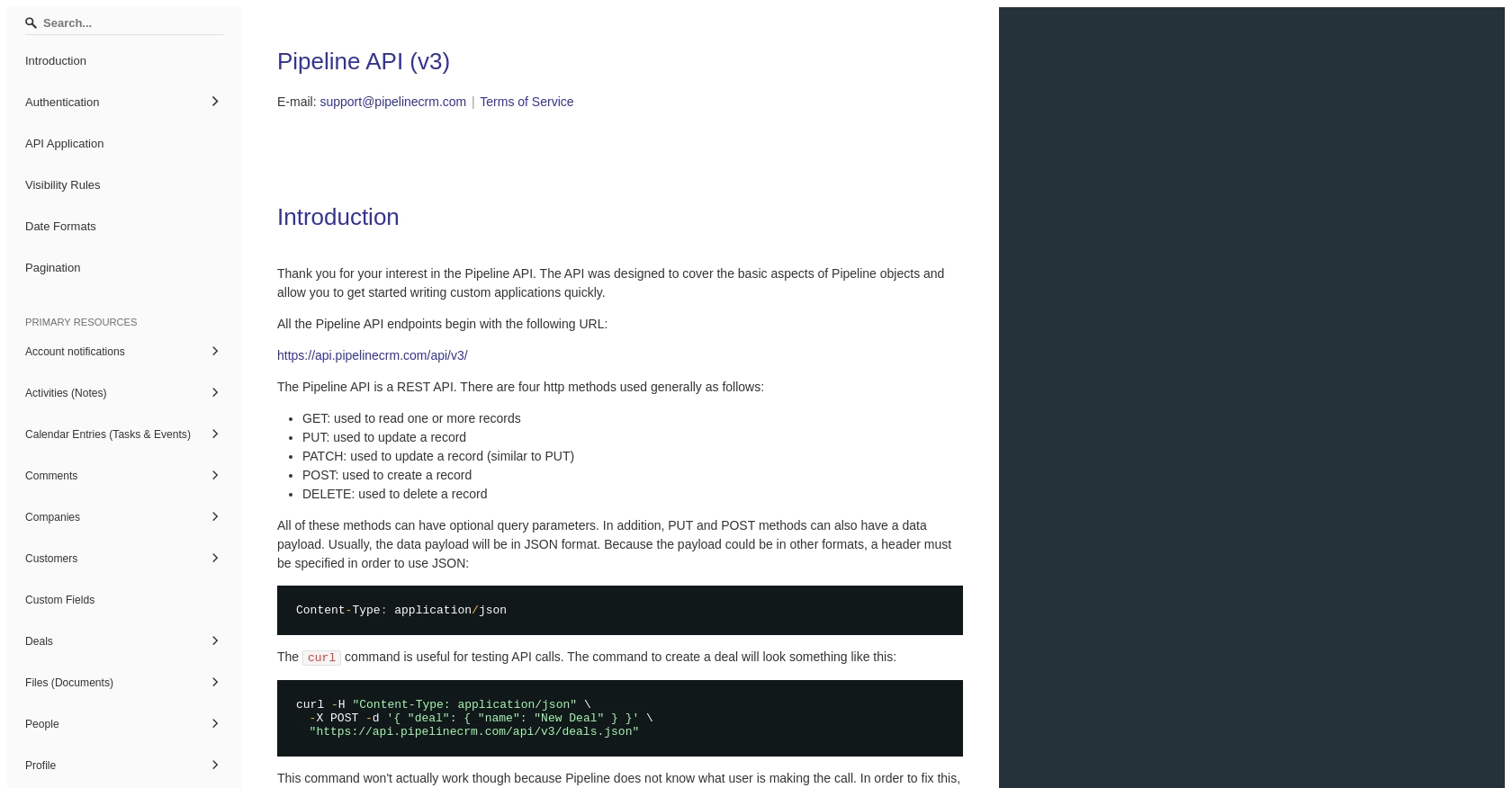How to Get Deals with the PipelineCRM API in Python

Introduction to PipelineCRM
PipelineCRM is a robust customer relationship management platform designed to enhance sales processes and improve customer interactions for businesses. With its user-friendly interface and powerful features, PipelineCRM helps sales teams manage leads, track deals, and optimize their sales pipeline effectively.
Integrating with the PipelineCRM API allows developers to automate and streamline sales operations, such as retrieving deal information. For example, a developer might use the PipelineCRM API to fetch and analyze deal data, enabling sales teams to make data-driven decisions and improve their closing rates.
Setting Up Your PipelineCRM Test Account
Before you can start interacting with the PipelineCRM API, you'll need to set up a test account. This will allow you to safely experiment with API calls without affecting live data.
Creating a PipelineCRM Account
If you don't already have a PipelineCRM account, you can sign up for a free trial on their website. This trial will give you access to the necessary features to test API interactions.
- Visit the PipelineCRM website.
- Click on the "Sign Up" button and follow the instructions to create your account.
- Once your account is set up, log in to access the dashboard.
Generating Your API Key for PipelineCRM
PipelineCRM uses API key-based authentication to secure API requests. Follow these steps to generate your API key:
- Log in to your PipelineCRM account.
- Navigate to the "Settings" section from the dashboard.
- Find the "API" tab and click on it to access API settings.
- Click on "Generate API Key" and copy the key provided. Store it securely as you'll need it for authentication in your Python scripts.
For more detailed information, you can refer to the PipelineCRM API documentation.

sbb-itb-96038d7
Making API Calls to Retrieve Deals from PipelineCRM Using Python
To interact with the PipelineCRM API and retrieve deal information, you'll need to use Python to make HTTP requests. This section will guide you through the process of setting up your Python environment, making the API call, and handling the response.
Setting Up Your Python Environment for PipelineCRM API Integration
Before you begin, ensure you have Python installed on your machine. This tutorial uses Python 3.11.1. Additionally, you'll need the requests library to handle HTTP requests. You can install it using pip:
pip install requestsWriting Python Code to Fetch Deals from PipelineCRM
Create a new Python file named get_pipelinecrm_deals.py and add the following code:
import requests
# Set the API endpoint and headers
endpoint = "https://api.pipelinecrm.com/api/v3/deals"
headers = {
"Content-Type": "application/json",
"Authorization": "Bearer Your_API_Key"
}
# Make a GET request to the API
response = requests.get(endpoint, headers=headers)
# Check if the request was successful
if response.status_code == 200:
deals = response.json()
for deal in deals:
print(deal)
else:
print(f"Failed to retrieve deals. Status code: {response.status_code}")
Replace Your_API_Key with the API key you generated from your PipelineCRM account.
Running the Python Script and Verifying the Output
Execute the script from your terminal or command line:
python get_pipelinecrm_deals.pyIf successful, you should see a list of deals printed in the terminal. This confirms that your API call was successful and that you have retrieved the deal data from PipelineCRM.
Handling Errors and Understanding PipelineCRM API Response Codes
It's essential to handle potential errors when making API calls. The example code checks for a successful response with a status code of 200. If the request fails, it prints the status code, which can help diagnose issues. Refer to the PipelineCRM API documentation for more details on error codes and their meanings.
Conclusion and Best Practices for Using the PipelineCRM API
Integrating with the PipelineCRM API using Python can significantly enhance your sales operations by automating the retrieval and analysis of deal data. By following the steps outlined in this guide, you can efficiently access and manage your sales pipeline, enabling data-driven decision-making and improved sales performance.
Best Practices for Secure and Efficient API Integration with PipelineCRM
- Securely Store API Keys: Always store your API keys securely, using environment variables or secure vaults, to prevent unauthorized access.
- Handle Rate Limiting: Be aware of any rate limits imposed by the API to avoid request throttling. Implement retry logic with exponential backoff to handle rate limit responses gracefully.
- Standardize Data Fields: Ensure that data retrieved from the API is transformed and standardized to fit your application's data model, facilitating seamless integration with other systems.
- Error Handling: Implement robust error handling to manage different HTTP response codes effectively, ensuring your application can recover from API errors smoothly.
Streamline Your Integrations with Endgrate
While integrating with individual APIs like PipelineCRM can be beneficial, managing multiple integrations can become complex and time-consuming. Endgrate offers a unified API solution that simplifies the integration process across various platforms, including PipelineCRM. By using Endgrate, you can focus on your core product development while outsourcing the complexities of integration management.
Explore how Endgrate can help you save time and resources by providing a seamless integration experience for your customers. Visit Endgrate to learn more about our solutions and how they can benefit your business.
Read More
Ready to get started?
